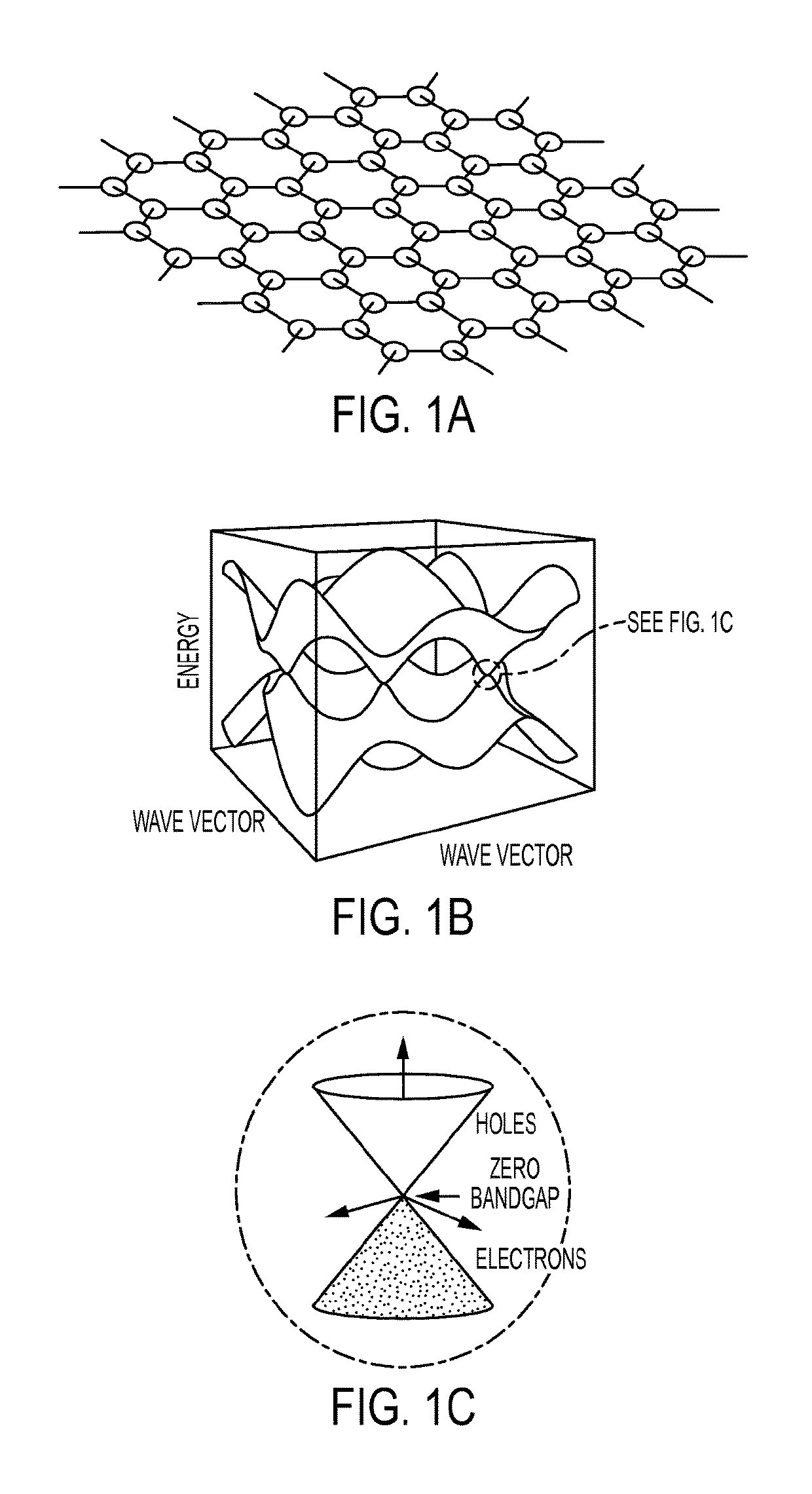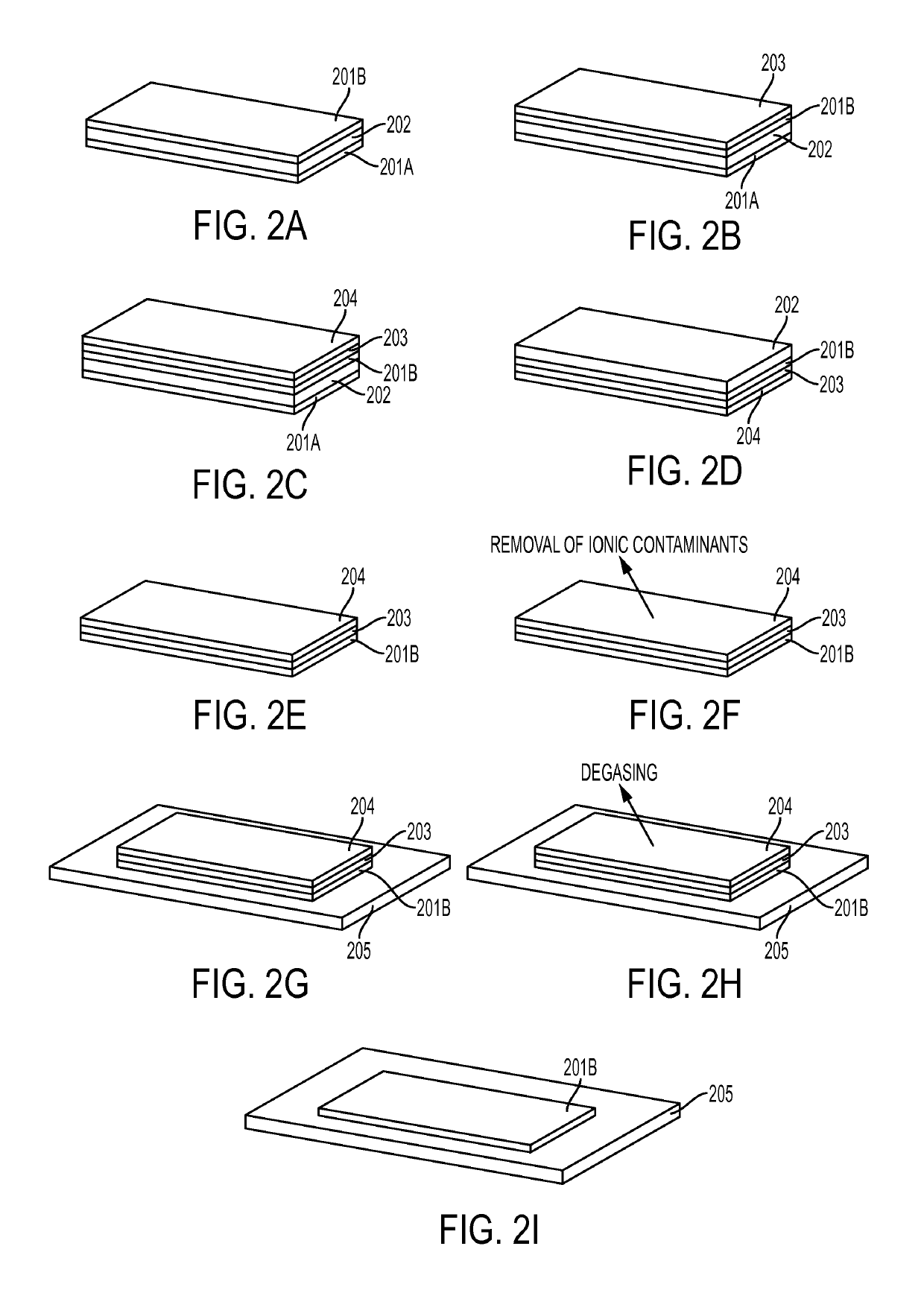Method of manufacturing large area graphene and graphene-based photonics devices
a graphene-based photonics and graphene-based technology, applied in the direction of instruments, fibre light guides, cladded optical fibres, etc., can solve the problems of poor quantum efficiency, difficult fabrication, limited bandwidth, etc., and achieves reduced saturation intensity, wide bandwidth, and easy production
- Summary
- Abstract
- Description
- Claims
- Application Information
AI Technical Summary
Benefits of technology
Problems solved by technology
Method used
Image
Examples
Embodiment Construction
[0054]The present invention relates to a method of manufacturing large area graphene, for use in graphene-based photonics devices, and which are used in a variety of applications. The present invention includes the fabrication of large area monolayer and multi-layer graphene samples of optical quality for a mode locking process. The present invention includes production of an ultrafast laser ranging instrument and an ultrawide bandwidth detector based on graphene as a saturable absorber, to demonstrate mode locking locked laser pulses in a laser application.
[0055]In addition, the present invention takes advantage of the unique optical and electrical properties of graphene, as well as enhances the responsivity with plasmonic effects of graphene-grating metamaterials, to enable spectral imaging in the THz range important for applications in astrophysics, gas analysis for planetary bodies, thermal imaging for homeland security, and remote sensing.
[0056]Graphene is a flat single layer c...
PUM
| Property | Measurement | Unit |
|---|---|---|
| photo responsivity | aaaaa | aaaaa |
| NIR) wavelength | aaaaa | aaaaa |
| wavelengths | aaaaa | aaaaa |
Abstract
Description
Claims
Application Information
 Login to View More
Login to View More - R&D
- Intellectual Property
- Life Sciences
- Materials
- Tech Scout
- Unparalleled Data Quality
- Higher Quality Content
- 60% Fewer Hallucinations
Browse by: Latest US Patents, China's latest patents, Technical Efficacy Thesaurus, Application Domain, Technology Topic, Popular Technical Reports.
© 2025 PatSnap. All rights reserved.Legal|Privacy policy|Modern Slavery Act Transparency Statement|Sitemap|About US| Contact US: help@patsnap.com



